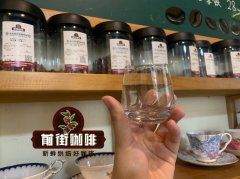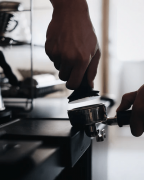Effect of roasting degree on flavor of Colombian coffee beans from coffee factory to cup coffee bean production
Coffee production: the timeline from the coffee factory to the cup
Colombian coffee plants grow on steep slopes, usually dotted with banana plants, providing shade and spongy currents. Coffee plants blossom and turn into coffee cherries. These will start green and then mature when they turn red. Coffee cherries are picked twice a year, usually during the rainy season, and can be picked every day or at most every eight days, which will be one of the decisive factors or quality. The closer they are to the best maturity, the better the final cup will taste. Due to the hilly environment where most coffee is produced, coffee is picked by hand in Colombia. Many small family-run farms pick cherries every day during the picking season.

Once cherries are picked, the pulp and inner shell are removed, leaving coffee beans, which is the "pit" (seed) of coffee cherries. Soak beans according to different methods, which also helps to distinguish different grades of beans. This is done to remove "floating matter", which are beans that contain air. Usually, Hypothenemus Hampei is one of the only insects that are resistant to caffeine because they are overripe or eaten by Hypothenemus Hampei.

Raw beans (unbaked) are shipped to bakers, usually overseas. This is to keep the product as fresh as possible. Raw coffee beans are seeds that can be preserved for a long time without affecting the quality of the final product, but once roasted, usually at about 400 °C, they change from seeds to disease. The preferences of the roasting also vary widely, from place to place. For example, France, Italy and Germany prefer dark roasting, which gives coffee a fuller taste and lower caffeine content. On the other hand, Japanese or Colombians tend to prefer lighter baking. For these reasons, producers tend to bake coffee in consuming countries.
When green beans are roasted, they turn dark brown. Shallow baking retains the original taste of different beans, while deeper baking has a fuller, more bitter taste. Interestingly, the longer you roast beans, the less caffeine you retain, so dark roasting such as French or Italian roasting actually contains less caffeine.
The roasted coffee beans are then ground and brewed (soaked in a French kettle, brewed in a coffee machine, or hot water is made into espresso from coffee powder under high pressure), and the coffee is ready to eat.
Important Notice :
前街咖啡 FrontStreet Coffee has moved to new addredd:
FrontStreet Coffee Address: 315,Donghua East Road,GuangZhou
Tel:020 38364473
- Prev

Will the different materials of the coffee cup affect the flavor of the coffee? Is it best to drink coffee from a ceramic cup?
Will different materials affect the flavor of coffee? You have chosen your favorite coffee bean. Starting from the source of the coffee bean, there seems to be nothing else to do but pour it into the cup and enjoy it. However, choosing the right container and the right material will be more important than you think. In order to fully enjoy your cup, you should make sure that the material you choose
- Next

What are the specific steps of how to make espresso with a coffee maker? The benefits of caffeine to human body
How to brew espresso with an espresso machine here are four simple and simple steps for using an espresso machine to make espresso: prepare 20 grams of finely ground dark roasted coffee beans, a small name to the gram, a concentrated cup, the step of filling a powder bowl with ground coffee beans, a cloth powder, using a powder hammer to tamp the powder layer and start extraction to lock the powder bowl into the machine.
Related
- Detailed explanation of Jadeite planting Land in Panamanian Jadeite Manor introduction to the grading system of Jadeite competitive bidding, Red bid, Green bid and Rose Summer
- Story of Coffee planting in Brenka region of Costa Rica Stonehenge Manor anaerobic heavy honey treatment of flavor mouth
- What's on the barrel of Blue Mountain Coffee beans?
- Can American coffee also pull flowers? How to use hot American style to pull out a good-looking pattern?
- Can you make a cold extract with coffee beans? What is the right proportion for cold-extracted coffee formula?
- Indonesian PWN Gold Mandrine Coffee Origin Features Flavor How to Chong? Mandolin coffee is American.
- A brief introduction to the flavor characteristics of Brazilian yellow bourbon coffee beans
- What is the effect of different water quality on the flavor of cold-extracted coffee? What kind of water is best for brewing coffee?
- Why do you think of Rose Summer whenever you mention Panamanian coffee?
- Introduction to the characteristics of authentic blue mountain coffee bean producing areas? What is the CIB Coffee Authority in Jamaica?

